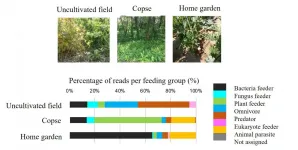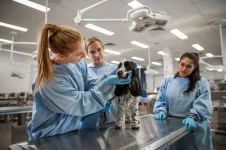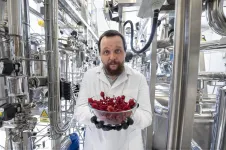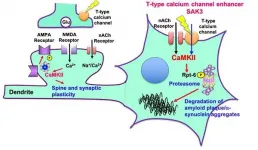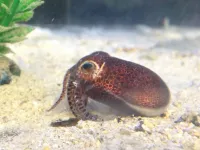(Press-News.org) [BRIDGEWATER, NJ; June 29, 2021] The American Association of Feline Practitioners (AAFP) has released the updated 2021 AAFP Feline Senior Care Guidelines to be published in the July issue of the Journal of Feline Medicine and Surgery. This update provides emerging advances in feline medicine with respect to the aging cat. The Task Force of experts provides a thorough current review in feline medicine that emphasizes the individual senior patient.
As defined in the 2021 AAHA/AAFP Feline Life Stage Guidelines, cats over 10 years of age are considered to be 'senior.' Understanding the changing needs of each individual senior cat is critical for both veterinary professionals and cat owners. "Veterinary professionals are encouraged to use the 2021 AAFP Feline Senior Care Guidelines to enhance their assessment and treatment of age-associated medical conditions and to provide guidance to clients so they are included in their cat's health care team," stated Task Force Co-chair, Hazel Carney, DVM, MS, DABVP (Canine/Feline).
The Guidelines address the importance of regular veterinary visits which includes a minimum of every six months for senior cats 10 to 15 years old in order to best track and manage health-related issues and detect disease early. Healthy senior cats over the age of 15 should be examined every four months. Cats with chronic health issues may need to be seen even more frequently depending on the severity of illness. "The newly emerging concept of frailty is introduced in these Guidelines and how practitioners can incorporate this into the senior cat assessment. They also detail common issues in aging cats including pain management, nutrition and weight management, diseases and conditions, quality of life, and end of life decisions," said Michael Ray, DVM, Task Force Co-chair.
Discussion is included on how quality of life (QOL) and health-related quality of life (HRQOL) impacts the aging cat, and emphasizes veterinarians and cat owners partnering to make well-informed decisions for the individual senior cat. The Task Force also recognizes the impact caring for an aging cat has on the cat owner. Veterinarians are asked to consider four budgets of care when making treatment plans: financial, time, emotional, and physical. The weight of each of these budgets will vary for each cat owner and it is important to recognize this when having decision-making discussions.
INFORMATION:
The AAFP provides additional supplementary resources to veterinary teams alongside these Guidelines including information on Quality of Life (QOL) and Health-Related Quality of Life (HRQOL) instruments, video demonstrations on myofascial examination techniques and cat friendly tips for dental examinations, a printable client brochure, as well as additional recommended resources.
The 2021 AAFP Feline Senior Care Guidelines and supplemental resources are available at catvets.com/senior-care. Cat owner resources, including the new senior care client brochure, are available at catfriendly.com/senior.
Acknowledgements
The AAFP would like to thank the Task Force for their hard work in developing the content for the 2021 Feline Life Stage Guidelines - Michael Ray, DVM, Co-Chair; Hazel C. Carney, DVM, MS, DABVP (Canine/Feline), Co-Chair; Beth Boynton, DVM; Jessica Quimby DVM, PhD, DACVIM; Sheilah Robertson, BVMS (Hons), PhD, DACVAA, DECVAA, DACAW, DECAWBM (WSEL), MRCVS; Kelly St. Denis, MSc, DVM, DABVP (Feline); Helen Tuzio, DVM, DABVP (Feline), CVA; Bonnie Wright, DVM, DACVAA.
The AAFP would also like to thank Boehringer Ingelheim Animal Health USA Inc., IDEXX Laboratories, Inc., Merck Animal Health, Purina Pro Plan Veterinary Diets, Royal Canin, and Zoetis Petcare for supporting the development of the 2021 AAFP Senior Care Guidelines and resources through educational grants to the AAFP.
About the American Association of Feline Practitioners
The American Association of Feline Practitioners (AAFP) improves the health and welfare of cats by supporting high standards of practice, continuing education, and evidence-based medicine (catvets.com). As a trusted leader in the veterinary community, the AAFP has a long-standing reputation and track record for facilitating high standards, including guidelines for practice excellence and educational resources. Over the years, the AAFP has encouraged veterinary professionals to continuously re-evaluate preconceived notions of practice strategies in an effort to advance the quality of feline medicine practiced. Launched in 2012, the Cat Friendly Practice® (CFP) Program (catvets.com/cfp) was created to improve the treatment, handling, and overall healthcare provided to cats. Its purpose is to equip veterinary practices, teams, and individuals with the tools and resources to reduce stress associated with the visit and elevate the standard of care provided to cats. Launched in 2020, the Cat Friendly Certificate Program (catvets.com/certificate) now provides this education to individual veterinary professionals. Catfriendly.com, or Cat Friendly Homes, is the AAFP's cat caregiver educational resource which is powered by feline veterinarians and includes a monthly newsletter, The Cat Column.
Osaka, Japan - A team of scientists led by the Department of Applied Physics at Osaka University, the Department of Physics and Electronics at Osaka Prefecture University, and the Department of Materials Chemistry at Nagoya University used photoinduced force microscopy to map out the forces acting on quantum dots in three dimensions. By eliminating sources of noise, the team was able to achieve subnanometer precision for the first time ever, which may lead to new advances in photocatalysts and optical tweezers.
Force fields are not the invisible barriers of science fiction but are a set of vectors indicating the magnitude and direction of forces acting in a region ...
Overview
The research team of Professor Toshihiko Eki of the Department of Applied Chemistry and Life Science (and Research Center for Agrotechnology and Biotechnology), Toyohashi University of Technology used a next-generation sequencer to develop a highly efficient method to analyze soil nematodes by using the 18S ribosomal RNA gene regions as DNA barcodes. They successfully used this method to reveal characteristics of nematode communities that inhabit fields, copses, and home gardens. In the future, the target will be expanded to cover all soil-dwelling organisms in agricultural soils, etc., to allow investigations into a soil's environment and bio-diversity. This is expected to contribute to advanced agriculture.
Details
Similar to when the ...
Receiving a simple thank you, spending time with peers and further developing their expertise, are all factors that make veterinarians feel good at work, according to a new study by researchers at the University of Adelaide.
In the study published by Vet Record, researchers investigated the positive side of veterinary work and specifically what brings vets pleasure in their job.
Lead author Madeleine Clise, a psychologist and Adjunct Lecturer at the University of Adelaide's School of Psychology says: "At a time in Australia when there are national shortages of vets, particularly in regional areas, and increased publicity about the ...
Prolonged exposure to antibiotics leads to the gain of bacteria's ability to defeat the drugs designed to fight them. Thus, if such antibiotic-resistant bacteria cause the infection, the only chance to use a specialized virus called phage infecting specific bacteria species. It is a powerful weapon against deadly diseases. At the same time, the effective treatment depends on factors that would not be suspected for years to impact the successful therapy. Recently, researchers from the Institute of Physical Chemistry, Polish Academy of Sciences led by dr. Jan Paczesny and Professor ...
Tsukuba, Japan - Depression is a worldwide problem, with serious consequences for individual health and the economy, and rapid and effective screening tools are thus urgently needed to counteract its increasing prevalence. Now, researchers from Japan have found that artificial intelligence (AI) can be used to detect signs of depression.
In a study published this month in BMJ Open, researchers from University of Tsukuba have revealed that an AI system using machine learning could predict psychological distress among workers, which is a risk factor for depression. ...
Atomic nuclei contain enormous energy that can be extracted through their fission mechanism, for example, as a result of the radioactive decay of uranium or plutonium nuclei. Likewise, a quantum of light of several electron-volts (2.4 eV in a laser pointer with a green beam) has colossal energy. If all photons were absorbed by matter, then its temperature could reach several thousand degrees. However, in practice this does not happen. The reason is the weak light-matter interaction due to the fact that the wavelength of light (500 nm) is a thousand times larger than the size of an emitting / absorbing atom (0.5 nm). It is this physical mechanism that prevents the destruction of matter when illuminated. The efficiency of light absorption increases ...
Researchers have identified a new treatment candidate that appears to not only halt neurodegenerative symptoms in mouse models of dementia and Alzheimer's disease, but also reverse the effects of the disorders.
The team, based at Tohoku University, published their results on June 8 in the International Journal of Molecular Sciences. The treatment candidate has been declared safe by Japan's governing board, and the researchers plan to begin clinical trials in humans in the next year.
"There are currently no disease-modifying therapeutics for neurodegenerative disorders such as Alzheimer's disease, Lewy body dementia, Huntington ...
As our society and transportation systems become increasingly electrified, scientists worldwide are seeking more efficient and higher capacity storage systems. Researchers at KAUST have made an important contribution by modifying lithium-sulfur (Li-S) batteries to suppress a problem known as polysulfide shuttling.
"The bottleneck in the utilization of renewable energy, especially in transportation, is the need for high-density batteries," says Eman Alhajji, Ph.D. student and first author of the research paper.
Li-S batteries have several potential advantages over ...
Bobtail and bottletail squids are tiny marine invertebrates that are found throughout the world's oceans and are useful model animals for research
There are 68 recognized species of bobtail squid and five recognized species of bottletail squid, but the timing of their divergence from one another is still relatively unknown
Researchers at OIST, Hiroshima University and the National University of Ireland Galway, collected 32 species of bobtail and bottletail squids
They looked at the genetic variations across the entire genomes of these species to estimate their evolutionary relationships
The results showed that the divergence of these species aligned with major ...
Tel Aviv University's groundbreaking technology may revolutionize the treatment of cancer and a wide range of diseases and medical conditions. In the framework of this study, the researchers were able to create a new method of transporting RNA-based drugs to a subpopulation of immune cells involved in the inflammation process, and target the disease-inflamed cell without causing damage to other cells.
The study was led by Prof. Dan Peer, a global pioneer in the development of RNA-based therapeutic delivery. He is Tel Aviv University's Vice President for Research and Development, head of the Center for Translational Medicine and a member of both the Shmunis School of Biomedicine and Cancer Research, George S. Wise Faculty ...

